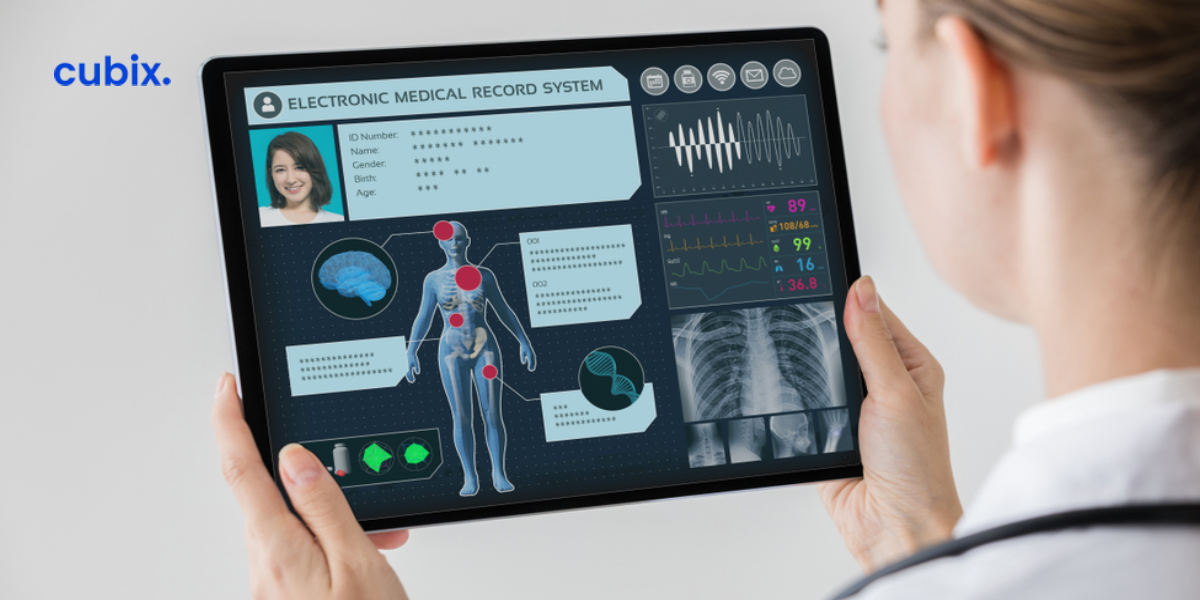A patient’s relationship with their healthcare service provider is a very intimate and personal one. A patient will go to great lengths to avail treatment at a facility or from a doctor he/she perceives as trustworthy.
To build and maintain patient’s trust in the organization, medical institutes need to ensure their patients the best possible experience that matches or exceeds their expectations. How does a hospital do that?
One of the major technologies that contribute immensely to deeply understanding and methodically improving the patient experience is Big Data. How can a healthcare organization go about big data development to enhance patient experience?
What Constitutes a Patient Experience?
A fantastic treatment plan can crumble if the aftercare is subpar. Patients weigh their experiences based on the entire journey, not just isolated high points. Simply put, everything a patient consciously or subconsciously perceives about your organization – from the cleanliness of the space to the professionalism of the staff, and every interaction he has with your institution contributes to the overall experience.
Hence to ensure a satisfactory experience, it is essential for healthcare organizations to break the experience down, using touchpoints as the signposts – a practice known as patient journey mapping. This enables organizations to gauge patient satisfaction by analyzing their behavior at various touchpoints.
Touchpoints – The Goldmine of Patient Behavior Data
Touchpoints are the intersections where a patient interacts with a service or brand, forming perceptions and judgments.
An organization that has mastered each touchpoint hardly makes a wrong move and is able to consistently offer its patients superior experiences. If there’s anything wrong, it's easy to figure out and make the correction in no time.
How’s that possible?
The touchpoint data holds the answers - it’s the information about patients’ behaviors that gives insights into how they feel. As a patient interacts with each touchpoint, he/she leaves a footprint. A smart organization would have a system in place to trace each interaction so they can decode it to understand their patient’s behavior and gain insights into what delights them and what results in a bad experience.
Those insights can then be used to improve the patient experience.
Smoothening the Patient-Institute Interaction Touchpoint by Touchpoint
Here’s how a healthcare institute can transform patient experience by utilizing Big Data solutions.
1. Welcome Desk
2. Waiting Room
3. Doctors and Nurses
4. Test Areas
5. Medication and Treatment
6. Billing and Payments
7. Feedback
8. Follow-up
Eyes Beyond the Prize - 3 Pillars of Incredible Patient Experience
Foolproofing your touchpoints to ensure smooth interaction with the patient is one aspect, that is majorly critical in ensuring a satisfactory experience. However, an excellent patient experience that fosters patient trust and sows seeds for long-term loyalty is built on three pillars; personalization, efficiency, and convenience.
Personalization
A hallmark of an excellent patient experience is personalized care tailored to individual needs, preferences, and values. Data plays an indispensable role in this personalization. Health data analytics provides insights into patient history, preferences, and specific health conditions.
Analyzing this data reveals patterns that can inform more nuanced care plans. Predictive analytics further refines the process by anticipating future health needs, ensuring patients receive proactive attention. Effective communication between patients and providers is also enriched when physicians have access to comprehensive data, allowing for a clearer understanding of health status and optimal treatment options.
Efficiency
Seamless transitions and coordination among healthcare teams are vital for reducing waiting times and enhancing patient satisfaction. Electronic Health Records (EHRs) and integrated health data systems consolidate patient information, making it easily accessible to various healthcare providers. This connectivity reduces redundant tests or procedures, ensuring all team members have a unified view of a patient's care. Moreover, data analytics can pinpoint bottlenecks in care delivery, enabling institutions to optimize operations and deliver timely care.
Convenience
The physical and emotional environment of healthcare facilities plays a significant role in patient experience. By utilizing data, institutions can actively monitor metrics such as infection rates and patient feedback to uphold the highest standards of cleanliness, safety, and comfort. Data-driven insights from patient feedback surveys can highlight areas for improvement, from physical aspects of the facility to staff interactions. Additionally, analyzing data helps identify and rectify patterns in medical errors, ensuring patients are in a secure environment that prioritizes their well-being.
Get Started
Big data solutions have become an indispensable tech in healthcare. It elevates patient experiences by allowing organizations to methodically approach excellence – enabling improvements in patient experience touchpoint by touchpoint. This data-driven approach boosts patient satisfaction, trust, and loyalty, leading to improved outcomes.
To gain expert consultancy and customized solutions for leveraging big data to enhance your patient experience and ultimately cement your place ahead of the competition, contact Cubix – a big data development company with a reputation for delivering solutions that bring results.

